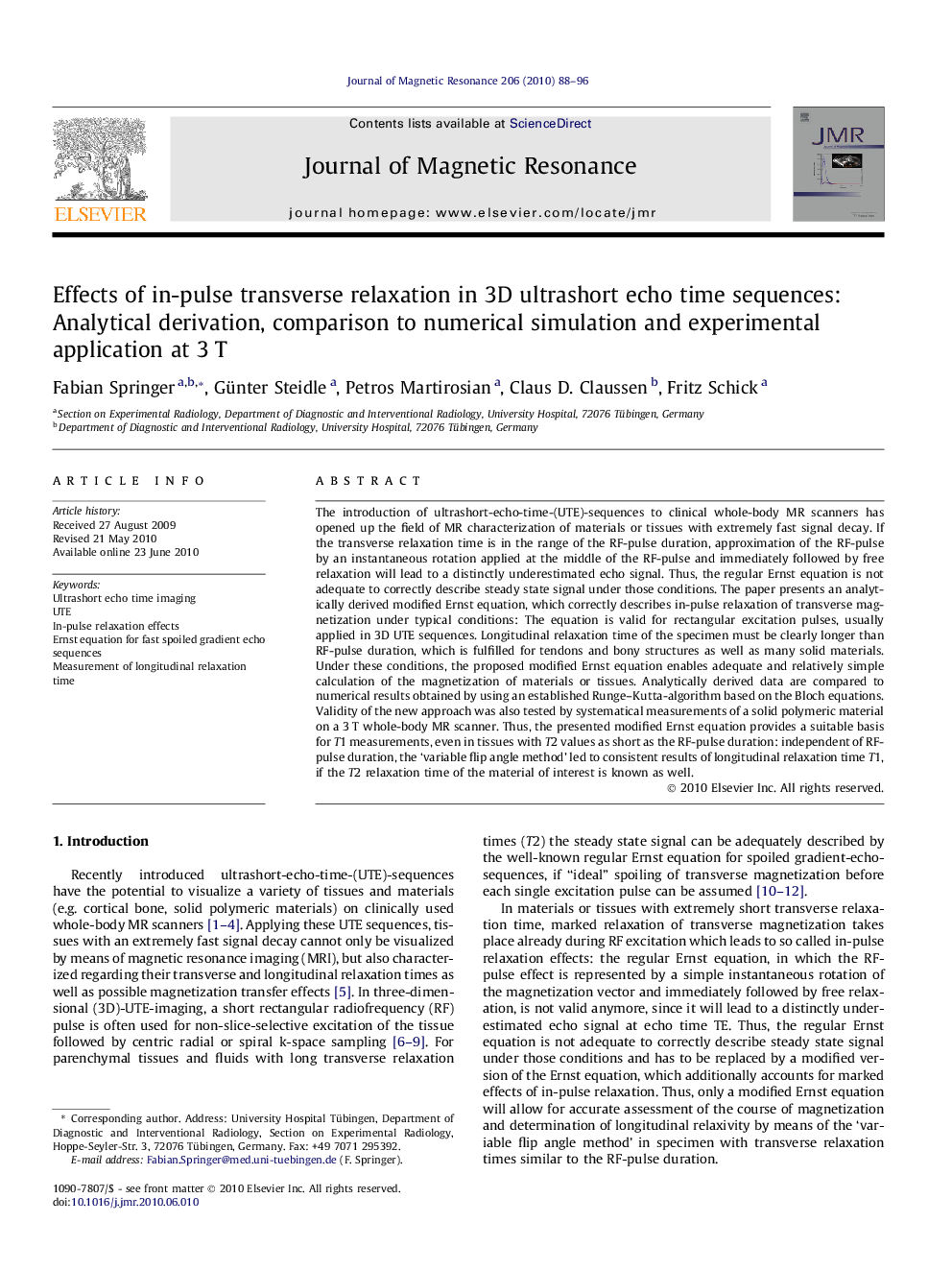| کد مقاله | کد نشریه | سال انتشار | مقاله انگلیسی | نسخه تمام متن |
|---|---|---|---|---|
| 5406598 | 1393181 | 2010 | 9 صفحه PDF | دانلود رایگان |

The introduction of ultrashort-echo-time-(UTE)-sequences to clinical whole-body MR scanners has opened up the field of MR characterization of materials or tissues with extremely fast signal decay. If the transverse relaxation time is in the range of the RF-pulse duration, approximation of the RF-pulse by an instantaneous rotation applied at the middle of the RF-pulse and immediately followed by free relaxation will lead to a distinctly underestimated echo signal. Thus, the regular Ernst equation is not adequate to correctly describe steady state signal under those conditions. The paper presents an analytically derived modified Ernst equation, which correctly describes in-pulse relaxation of transverse magnetization under typical conditions: The equation is valid for rectangular excitation pulses, usually applied in 3D UTE sequences. Longitudinal relaxation time of the specimen must be clearly longer than RF-pulse duration, which is fulfilled for tendons and bony structures as well as many solid materials. Under these conditions, the proposed modified Ernst equation enables adequate and relatively simple calculation of the magnetization of materials or tissues. Analytically derived data are compared to numerical results obtained by using an established Runge-Kutta-algorithm based on the Bloch equations. Validity of the new approach was also tested by systematical measurements of a solid polymeric material on a 3Â T whole-body MR scanner. Thus, the presented modified Ernst equation provides a suitable basis for T1 measurements, even in tissues with T2 values as short as the RF-pulse duration: independent of RF-pulse duration, the 'variable flip angle method' led to consistent results of longitudinal relaxation time T1, if the T2 relaxation time of the material of interest is known as well.
Journal: Journal of Magnetic Resonance - Volume 206, Issue 1, September 2010, Pages 88-96